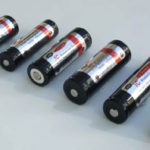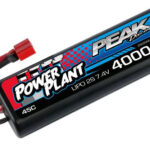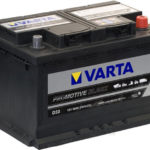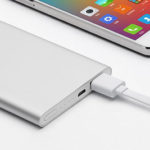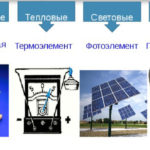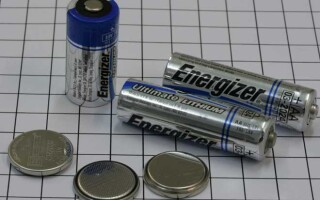The key element in the mobility of electronic devices is the rechargeable battery (battery). Growing demands to ensure their longest possible autonomy stimulate constant research in this field and lead to the emergence of new technological solutions.
Widely used nickel-cadmium (Ni-Cd) and nickel-metal hydride (Ni-MH) batteries, an alternative appeared - first lithium batteries, and then the more advanced lithium-ion batteries (Li-ion).
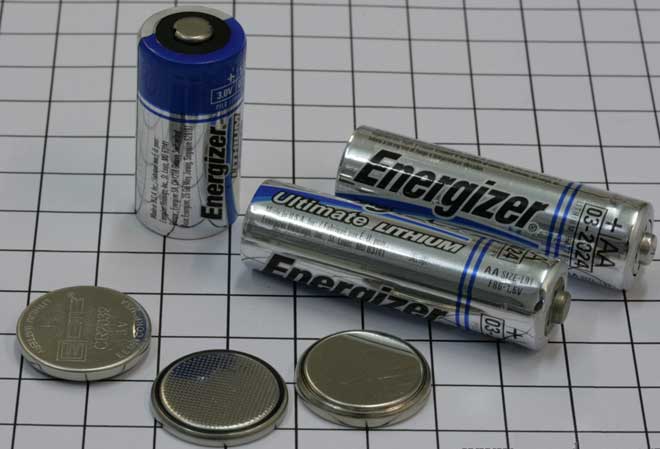
Contents
History
The first batteries of this kind appeared in the 1970s. They immediately became in demand due to their improved characteristics. The anode of the cells was made of lithium metal, the properties of which made it possible to increase the energy density. That's how lithium batteries appeared.
The new batteries had a significant drawback - an increased risk of explosion and ignition. The reason was the formation of a lithium film on the surface of the electrodes, which led to a breach of temperature stability. At the moment of maximum load, the battery could explode.

The technology was refined, resulting in the abandonment of pure lithium in the battery components in favor of using its positively charged ions. The lithium-ion battery proved to be a successful solution.
This type of ion battery is characterized by greater safety, which is obtained by a slight decrease in energy density, but constant technological progress has made it possible to minimize the loss of this indicator.
Device
The introduction of lithium-ion batteries in consumer electronics has gained a breakthrough with the development of a battery with a cathode of carbon material (graphite) and an anode of cobalt oxide.
In the process of discharging the battery, lithium ions are removed from the cathode material and incorporated into the cobalt oxide of the opposite electrode; during charging, the process proceeds in the opposite direction. Thus, the electric current is created by the lithium ions moving from one electrode to the other.
Li-Ion batteries are made in cylindrical and prismatic designs. In the cylindrical design, two ribbons of flat electrodes separated by electrolyte-impregnated material are coiled and placed in a sealed metal case. The cathode material is applied on aluminum foil, and the anode material on copper foil.
The prismatic design of the battery is obtained by stacking rectangular plates on top of each other. This shape of the battery makes it possible to make the layout of the electronic device more dense. Prismatic batteries are also available with coiled electrodes, twisted into a spiral.
Operation and life
Long, full and safe operation of lithium-ion batteries is possible if the rules of operation are followed, neglecting them will not only shorten the service life of the product, but can also lead to negative consequences.
Operation
The key requirement for the operation of Li-Ion batteries concerns temperature - do not allow overheating. High temperature can cause maximum damage, and overheating can be caused by an external source as well as stressful charging and discharging modes of the battery.
For example, heating up to 45°C reduces the battery's charge-holding capacity by a factor of 2. This temperature is easily achieved when the device is exposed to the sun for long periods of time or when running energy-intensive applications.
If the product overheats, it is recommended that it be placed in a cool place, preferably with the battery turned off and removed.
To best preserve battery performance in the heat of summer, you should use the power-saving mode, which is available on most mobile devices.
Low temperatures also have a negative effect on ion batteries, at temperatures below -4°C the battery can no longer deliver its full power.
But the cold is not as bad for Li-Ion batteries as high temperatures, and most often does not lead to irreversible damage. Despite the fact that after warming up to room temperature the battery performance is fully restored, the decrease in capacity in the cold should not be forgotten.
Another recommendation for the operation of Li-Ion batteries - do not allow them to be deeply discharged. Many previous generations of batteries had a memory effect, which required a discharge to zero followed by a full charge. Li-Ion batteries do not have this effect, and sporadic full discharges have no adverse effects, but continuous deep discharges are harmful. It is recommended that the charger be connected at a charging level of 30%.
Lifetime
Improper use of Li-Ion batteries may shorten their life by a factor of 10-12. This life is directly related to the number of charging cycles. It is believed that Li-Ion type batteries can withstand from 500 to 1000 cycles with a full discharge. A higher percentage of remaining charge before the next charge significantly increases battery life.
Since the length of service life of Li-Ion batteries is determined in no small part by the operating conditions, it is impossible to give an exact life expectancy for these batteries. On average, you can expect a battery of this type to last 7-10 years if the required rules are followed.
Charging process
Avoid plugging the battery into the charger for excessive periods of time when charging. The lithium-ion battery will function normally with a voltage not exceeding 3.6 volts. Battery chargers will supply 4.2 volts to the battery during the charging process. If the charging time is exceeded, undesirable electrochemical reactions may start in the battery, which will lead to overheating with all the ensuing consequences.
The developers have taken into account such a feature - the safety of charging of modern Li-Ion batteries is controlled by a special built-in device that stops the charging process if the voltage exceeds the permissible level.
For lithium batteries, a two-stage charging method is the correct way to charge them. The first stage is to charge the battery by providing a constant charging current, the second stage is to provide a constant voltage and gradually reduce the charging current. This algorithm is hardware implemented in most household chargers.
Storage and disposal
The lithium-ion battery can be stored for quite a long time, the self-discharge is 10-20% per year. But at the same time there is a gradual decrease in the characteristics of the product (degradation).
It is recommended to store such battery in a humidity-proof place at +5 ... +25°C. Strong vibrations, shocks and proximity to open flame are unacceptable.
The recycling process of lithium-ion cells should be carried out at specialized facilities that have the appropriate license. Approximately 80% of the materials of recycled batteries can be reused in the production of new batteries.
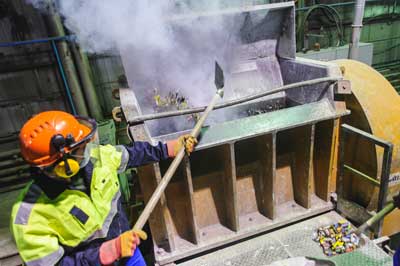
Safety
A lithium-ion battery, even in its miniature size, carries a risk of explosive self-ignition. Such a peculiarity of this type of battery requires safety measures at all stages, from design to production and storage.
To improve the safety of Li-Ion batteries, a small electronic circuit board, a control and management system designed to prevent overloading and overheating, is placed in their case during manufacture. The electronic mechanism increases the resistance of the circuit when the temperature rises above a predetermined limit. Some battery models have a built-in mechanical switch that breaks the circuit when the pressure inside the battery grows.
Also, battery casings often have a safety valve that relieves pressure in case of an emergency.
Pros and Cons of Lithium Batteries
The advantages of this type of battery are:
- high energy density;
- no memory effect;
- long service life;
- low self-discharge rate;
- no maintenance required;
- ensuring unchanged operating parameters in a relatively wide temperature range.
The lithium battery also has disadvantages, such as:
- risk of spontaneous combustion;
- higher cost than its predecessors;
- the need for a built-in controller;
- the undesirability of deep discharge.
Technology of production of Li-Ion batteries is constantly improving, many of the shortcomings are gradually becoming a thing of the past.
Applications
The high energy density indicator of lithium-ion batteries determines their main field of application - mobile electronic devices: laptops, tablets, smartphones, camcorders, cameras, navigation systems, various built-in sensors and a number of other products.
The existence of the cylindrical form factor of these batteries allows them to be used in flashlights, landline phones and other devices that previously consumed energy from disposable batteries.
The lithium-ion principle of battery construction has several varieties, the types differing in the type of materials used (lithium-cobalt, lithium-manganese, lithium-nickel-manganese-cobalt-oxide, etc.). Each of them finds its own sphere of application.
In addition to mobile electronics, the lithium-ion battery group is used in the following applications:
- hand-held power tools;
- portable medical equipment;
- uninterruptible power supplies;
- security systems;
- emergency lighting modules;
- solar power stations;
- electric cars and electric bicycles.
Given the continuous improvement in lithium-ion technology and the successes in creating batteries of high capacity in a small size, we can predict the expansion of the use of such batteries.
Labeling
Lithium-ion batteries are marked on the outer casing of the battery, and the coding may vary greatly depending on the size. A single standard for all manufacturers of battery marking has not yet been developed, but it is still possible to understand the most important parameters on your own.
The letters in the line indicate the type of cell and the materials used: the first letter I indicates the lithium-ion technology, the next letter (C, M, F or N) specifies the chemical composition, the third letter R means that the cell is rechargeable.
The numbers in the size designation indicate the size of the battery in millimeters: the first two numbers indicate the diameter and the two others the length. For example, 18650 indicates that the diameter is 18 mm and the length is 65 mm, 0 indicates the cylindrical form factor.
The last letters and numbers in the row are manufacturer-specific capacity markings. There are also no uniform standards for indicating the date of manufacture.


